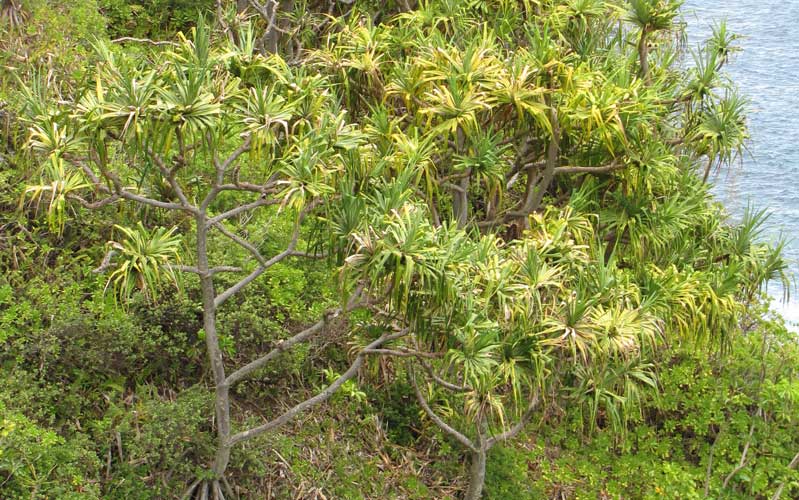In mid-May, the Hawai`i Department of Agriculture’s Plant Pest Control Branch issued pest advisories on the hala scale, Thysanococcus pandani Stickney, and the bagrada bug, Bagrada hilaris Burmeister.
The hala scale was first detected in Hawai`i on trees in Hana, Maui, in 1994, and has since spread across the island to the point that, according to the advisory, it “now infests all but the most remote hala trees.”
Moloka`i hala have also been infested and population of infested trees found on O`ahu, is being treated, the advisory states.
The scale can deform leaves and “also attacks the tree’s fruit, can cause entire crowns of the plant to fall off, and premature death of the tree,” the advisory states.
The advisory cautions against any interisland movement of hala plants, seeds, or green leaves. If brown leaves are to be shipped interisland, they should be double-bagged and frozen for at least 48 hours.
The bagrada bug, a small “stink bug” described as “a serious economic pest of agricultural crops,” was detected on Maui just last fall. Its preferred hosts are cruciferous vegetables, including broccoli, bok choi, cabbages, cauliflower, and Brussels sprouts, but it also feeds on corn, potatoes, papayas, and other crops as well as weeds.
To date, the branch has issued no pest advisory on the fungus Ceratocystis fimbriata killing `ohi`a on the Big Island.
Nor does it plan to.
According to Darcy Oishi, chief of the biocontrol section of the DOA, “The Plant Pest Control Branch is not planning to issue a pest advisory for Ceratocystis fibriata at this point in time. However, HDOA is working with the lead agencies (U.S. Forest Service, Department of Land and Natural Resources, and University of Hawai`i) on this issue on what actions are appropriate and realistic for HDOA to take.”
— Patricia Tummons


Leave a Reply